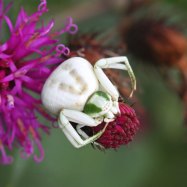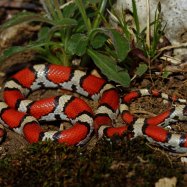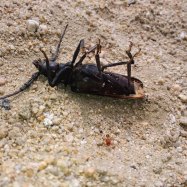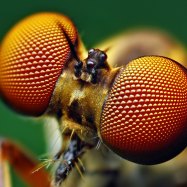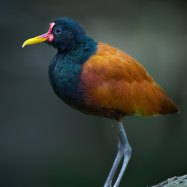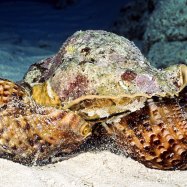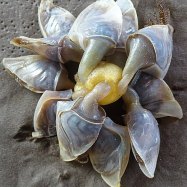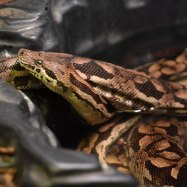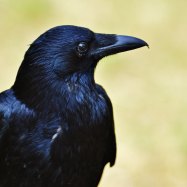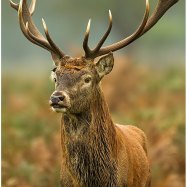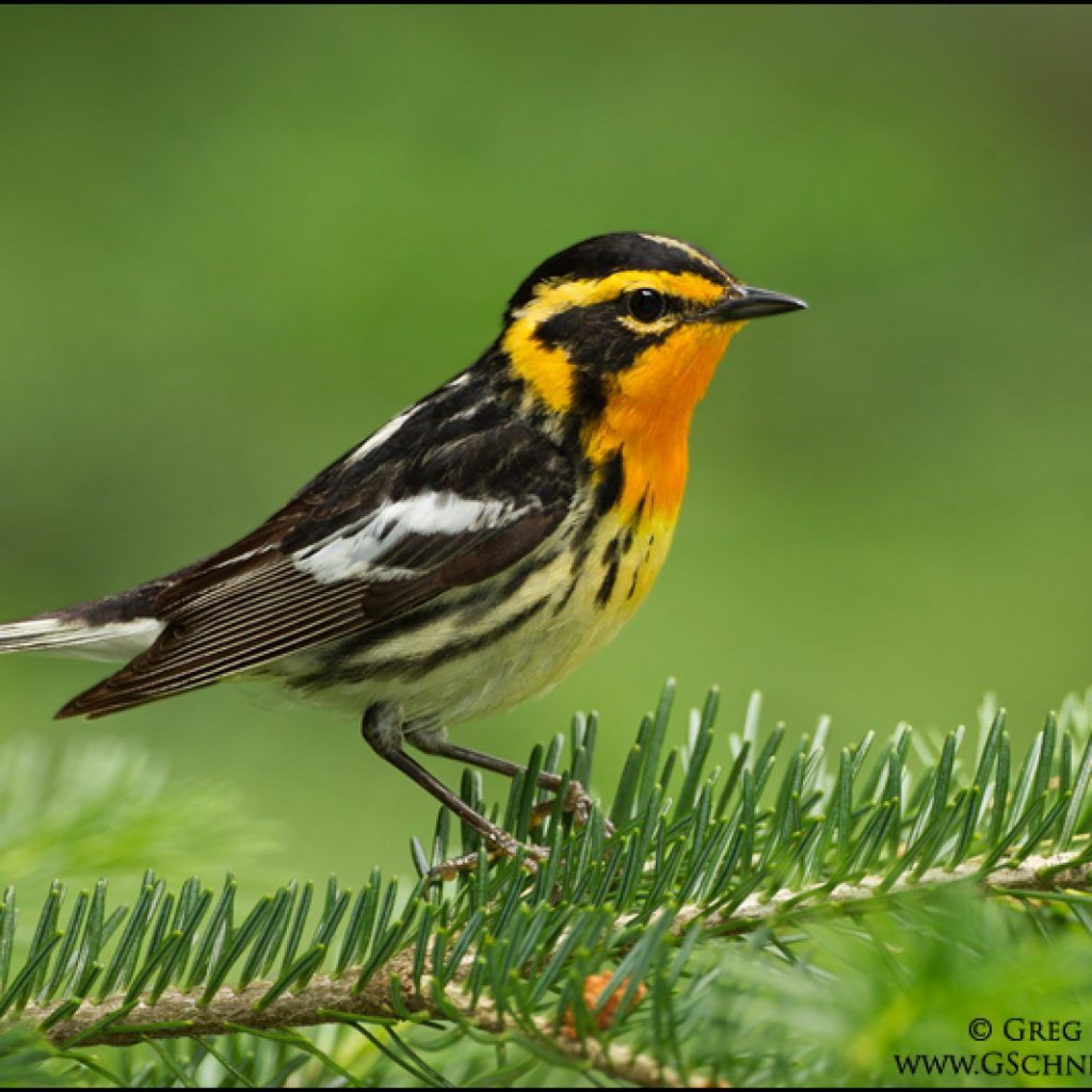
Blackburnian Warbler
10 - 13 cm
The Blackburnian Warbler is a small songbird found in Eastern North America and the Andes mountains. With a length of 10 - 13 cm and belonging to the Parulidae family, it is known for its striking black and orange plumage. These energetic birds are a treat to spot in the wild and are often heard belting out beautiful songs. #blackburnianwarbler #smallbird #northamerica #andesmountains #parulidae #birdwatching
Animal Details Summary:
Common Name: Blackburnian Warbler
Kingdom: Animalia
Habitat: Coniferous and mixed forests
Blackburnian Warbler: A Vibrant and Fascinating Songbird
The forests of North and South America are home to a wide variety of bird species, each one more captivating than the next. However, one species stands out with its striking black, white, and orange coloration and melodic songs - the Blackburnian Warbler (Setophaga fusca). This small passerine bird, also known as the "Firethroat," has captured the hearts of bird enthusiasts with its stunning appearance and unique behaviors.The name "Blackburnian" is derived from the bird's distinct breeding plumage, which resembles the colors of the Blackburnian Regiment - a British army unit during the American Revolution Blackburnian Warbler. The name "warbler" comes from the bird's constant movement, flitting about in search of insects.
Kingdom: Aves, Class: Aves, Order: Passeriformes, Family: Parulidae - The Taxonomy of Blackburnian Warbler
The Blackburnian Warbler belongs to the kingdom Animalia, making it a multicellular, eukaryotic organism. It is part of the phylum Chordata, placing it in the same category as other birds, mammals, reptiles, and fish. The class Aves, also known as birds, is characterized by their feathers, wings, and beaks. The Blackburnian Warbler belongs to the order Passeriformes, meaning "perching birds," and it has an average of 4,000 species. Within this order, the Blackburnian Warbler is further classified in the family Parulidae, commonly referred to as the wood-warblers.
Habitat: A Coniferous and Mixed Forest Dweller
The Blackburnian Warbler is found in coniferous and mixed forests, making its home in tall trees with dense foliage. It can also be found in spruce, fir, hemlock, and pine trees. These forests provide the ideal environment for the warbler to build its nest, feed on insects, and sing its trademark songs Bee. It is mostly found in higher elevations, typically above 4,000 feet, although it can also be found in lower-lying areas.
Feeding Method: An Insectivorous Diet
The Blackburnian Warbler is a predator insectivore, meaning its diet consists mainly of insects. It can be seen hopping from branch to branch, searching for insects on the tree's surface. The warbler also has the ability to hover while foraging for insects, a unique behavior that sets it apart from other songbirds. It uses its sharp, thin, and slightly down-curved beak to pluck insects, spiders, and caterpillars from the leaves and branches.
Geographical Distribution: A Traveler across North and South America
The Blackburnian Warbler has a vast geographical distribution, spanning across both the American continents. It can be found in eastern North America, from Nova Scotia to Georgia, and also in the high altitude regions of the Andes mountains in South America. During the winter months, the warbler migrates to the mountains of Central and South America, including Costa Rica, Panama, and Colombia. These mountains offer the warbler an ideal wintering spot with cooler temperatures, abundant food, and dense forests.
Country of Origin: The Beautiful Forests of Canada
Although the Blackburnian Warbler can be found in many countries, its country of origin is Canada. This is where the bird forages, breeds, and raises its young during the summer months. The warbler prefers the cool and moist climate of the north, making Canada the perfect breeding ground for this species.
Location: The Eastern North America and Andes Mountain Ranges
Within Canada, the Blackburnian Warbler can be found in the eastern regions, specifically in the provinces of Ontario, Quebec, and Newfoundland, as well as the Atlantic maritime provinces. It is also found in the eastern regions of the United States, including Maine, Vermont, New Hampshire, and New York. During the breeding season, it can also be spotted in the Adirondack and Appalachian mountains.
Animal Coloration: The Black, White, and Orange Beauty
The Blackburnian Warbler stands out amongst its fellow birds for its vibrant and bold colors. Its upperparts are a striking black, with white highlights on its wings and tail. Its chest and face are a vibrant orange, making it a highly visible bird when foraging in the trees. The female Blackburnian Warbler has a slightly duller appearance, with more streaks of black and brown on its back and sides.
Body Shape: An Adorable Small Songbird
The Blackburnian Warbler is a small songbird, measuring only 10 to 13 cm in length. Its body is slim and agile, making it an excellent flyer and foraging bird. It has a round head, with a pointed beak and long tail feathers. The male warbler has a black cap on its head, while the female has a yellow-green cap. Both have a white patch just above the eye, making it easy to distinguish this species from other warblers.
The Behavior of the Blackburnian Warbler: A Unique and Intriguing Species
Aside from its striking appearance, the Blackburnian Warbler has several unique behaviors that make it a fascinating species to study. Here are a few notable behaviors of this small songbird:
1. Complex and Melodic Songs
The male Blackburnian Warbler is known for its complex and melodic songs, which it uses to attract a mate and defend its territory. Its song is a series of clear and high-pitched notes, often repeated several times. The warbler is also known for its high frequency, with some of its songs reaching up to 10,000 Hz.
2. Aggressive Defense of Territory
During the breeding season, the male Blackburnian Warbler is fiercely protective of its territory. It will defend its space and food sources from other males, often engaging in intense chirping and wing-fluttering displays to ward off other birds.
3. Cooperative Breeding Behavior
Unlike other warbler species, the Blackburnian Warbler exhibits cooperative breeding behavior, where immature birds help the breeding pair raise their young. This is not commonly seen in birds and adds to the species' uniqueness.
Conservation Status: A Threatened Species
Unfortunately, the Blackburnian Warbler is facing several threats to its survival, including habitat loss and fragmentation, predation by domestic cats, and climate change. As a result, it is classified as a "Threatened" species according to the International Union for Conservation of Nature (IUCN) Red List. To protect this beautiful songbird, efforts are being made to conserve and preserve its natural habitat and raise awareness about the importance of protecting these birds.
Conclusion
The Blackburnian Warbler is a truly remarkable species with its stunning appearance, unique behaviors, and vast geographical range. From its highly visible coloration to its melodic and complex songs, this small songbird has captured the imaginations of bird lovers worldwide. As we continue to learn more about this species, it is vital to protect and preserve its natural habitat to ensure it thrives for generations to come.

Blackburnian Warbler
Animal Details Blackburnian Warbler - Scientific Name: Setophaga fusca
- Category: Animals B
- Scientific Name: Setophaga fusca
- Common Name: Blackburnian Warbler
- Kingdom: Animalia
- Phylum: Chordata
- Class: Aves
- Order: Passeriformes
- Family: Parulidae
- Habitat: Coniferous and mixed forests
- Feeding Method: Insectivorous
- Geographical Distribution: North and South America
- Country of Origin: Canada
- Location: Eastern North America and the Andes mountains
- Animal Coloration: Black, white, orange
- Body Shape: Small songbird
- Length: 10 - 13 cm
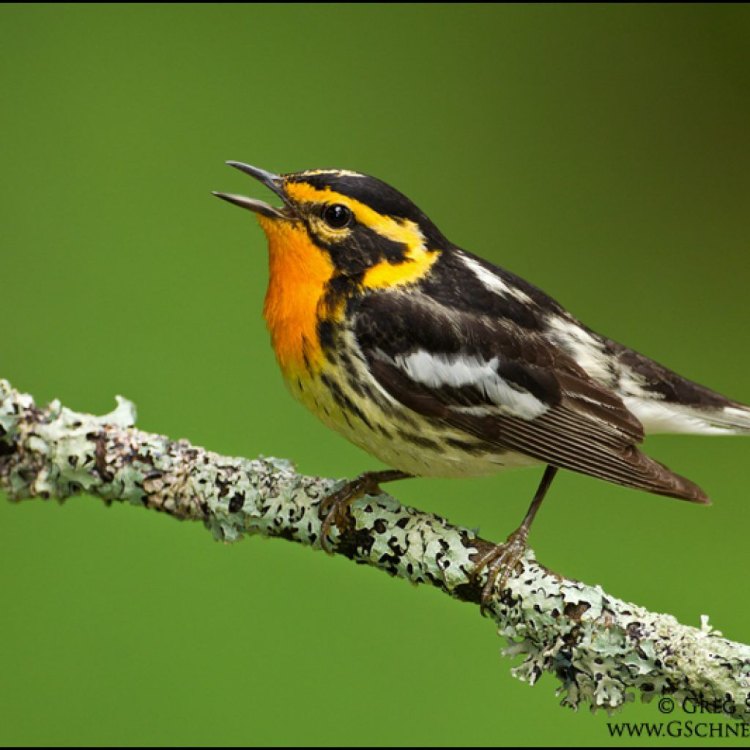
Blackburnian Warbler
- Adult Size: Small
- Average Lifespan: 5 - 8 years
- Reproduction: Monogamous
- Reproductive Behavior: Migratory
- Sound or Call: High-pitched, insect-like songs
- Migration Pattern: Long-distance migrant
- Social Groups: Solitary or in loose flocks
- Behavior: Active and agile
- Threats: Habitat loss, climate change
- Conservation Status: Least Concern
- Impact on Ecosystem: Pollinates flowers and controls insect populations
- Human Use: Birdwatching
- Distinctive Features: Bright orange throat and black and white striped head
- Interesting Facts: One of the most strikingly colored warblers
- Predator: Birds of prey, snakes, and mammals
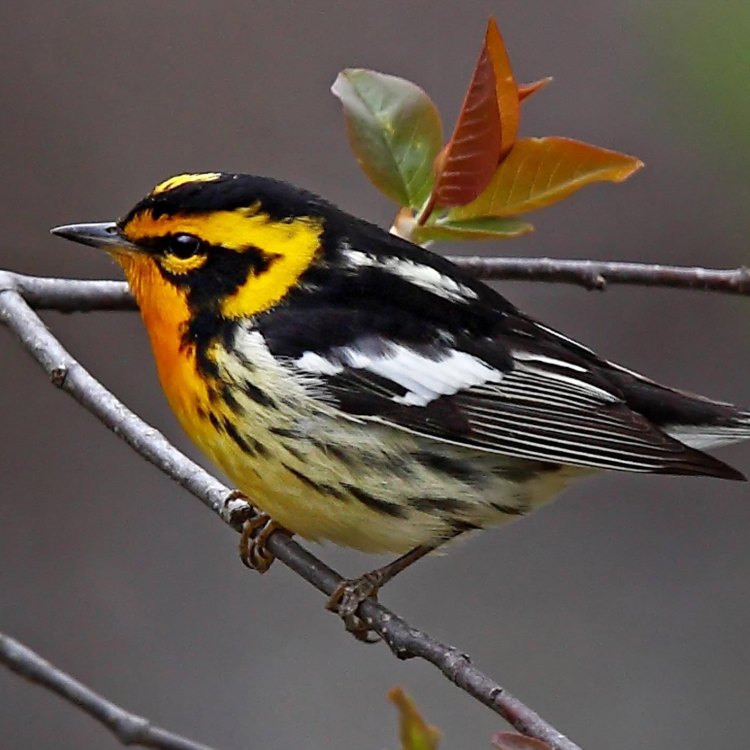
Setophaga fusca
The Colorful Wonder of the Blackburnian Warbler
Nature is full of incredible creatures, each with its own unique characteristics and roles in the ecosystem. Among these creatures is the vibrant and colorful Blackburnian Warbler, a small-sized bird with a big impact. Despite its small stature, this bird stands out with its striking appearance and important role in the ecosystem. In this article, we will explore the fascinating features of the Blackburnian Warbler and its significance in the natural world PeaceOfAnimals.Com.The Distinctive Looks of the Blackburnian Warbler
The Blackburnian Warbler, or Setophaga fusca, is a small bird that measures only 4.7 to 4.9 inches in length, making it one of the smallest warblers in North America. Despite its small size, this bird is easily recognizable due to its bright orange throat and black and white striped head. The rest of its body is mostly white and gray, making its throat and head stand out even more. This striking coloration has earned it the nickname "fire throat" among bird enthusiasts.
But why does this bird have such a unique and eye-catching appearance? The answer lies in their habitat and lifestyle. Blackburnian Warblers primarily live in the treetops of coniferous and mixed forests, where the orange color of their throat acts as camouflage against the green foliage. This allows them to blend in and protect themselves from predators while searching for food Belted Kingfisher. The black and white stripes on their head also serve as camouflage, especially when they are hiding in the shadows of the dense forest.
A Life of Adventure and Migration
Blackburnian Warblers are migratory birds, meaning they travel long distances during specific seasons of the year. They spend their summers in the northern parts of the United States and Canada, where they breed and raise their young. As fall approaches, they embark on an incredible journey, flying thousands of miles to Central and South America to spend the winter. This long-distance migration is no easy feat for these tiny birds, but it is necessary for their survival.
Their monogamous reproductive behavior also contributes to their migratory lifestyle. Blackburnian Warblers usually mate for life and return to the same breeding grounds each year. This creates a strong connection to their breeding grounds, making their journey back every year even more impressive.
A Singer in the Forest
Aside from its distinctive appearance, the Blackburnian Warbler is also known for its high-pitched, insect-like songs. These songs are typically heard during their breeding season, as they use it to attract a mate and establish their territory. Their songs are complex and consist of multiple notes and patterns, making it a beautiful and unique sound in the forest.
Active and Agile Behavior
Blackburnian Warblers are known for their active and agile behavior. They are constantly moving and foraging for food, which primarily consists of insects, spiders, and other small invertebrates. These birds are excellent at catching their prey, using their sharp beaks and quick movements to their advantage. Their agility also allows them to navigate through the dense vegetation of their forest habitat with ease.
Threats to the Blackburnian Warbler
Despite its adaptability and resilience, the Blackburnian Warbler is still facing threats in its natural habitat. Habitat loss due to deforestation and climate change are two major threats to this species. As their preferred breeding grounds are in the northern parts of the United States and Canada, the increasing temperatures and changes in weather patterns can disrupt their breeding cycle and food availability. Additionally, deforestation leads to the destruction of their nesting sites and reduces their access to food.
Conservation Efforts and Impact on the Ecosystem
Despite these threats, the Blackburnian Warbler is currently classified as "Least Concern" on the IUCN Red List of Threatened Species. This indicates that, while they are facing challenges, their population is still relatively stable. However, conservation efforts are crucial to ensuring that this remains the case. Many organizations and conservation groups are working towards protecting and preserving the habitat of the Blackburnian Warbler. By doing so, not only are we safeguarding the survival of this beautiful species, but we are also protecting the overall health of the ecosystem.
The Blackburnian Warbler plays a vital role in its ecosystem as a pollinator of flowers and a natural predator of insects. By pollinating flowers, it helps in the reproduction and growth of plants, which is essential for maintaining the balance of the ecosystem. Furthermore, by preying on insects, it helps in controlling their populations, preventing outbreaks and balancing the food chain.
Human Appreciation for the Blackburnian Warbler
Aside from its ecological importance, the Blackburnian Warbler also holds a special place in the hearts of birdwatchers and nature enthusiasts. Its striking appearance and behaviors make it a sought-after sighting during breeding and migration seasons. Many people travel to specific locations to catch a glimpse of this tiny yet magnificent bird. Birdwatching not only allows us to appreciate the beauty of this species but also raises awareness about the importance of conservation efforts to protect its habitat.
Final Thoughts
In conclusion, the Blackburnian Warbler is a small yet remarkably colorful and impactful bird. From its distinct appearance and lifestyle to its crucial role in the ecosystem, this bird is truly a wonder of nature. While facing various threats, conservation efforts and appreciation from humans go a long way in ensuring its survival and the balance of the ecosystem. So next time you take a walk in the forest, keep an eye out for this vibrant bird and appreciate its unique features and value in the natural world.
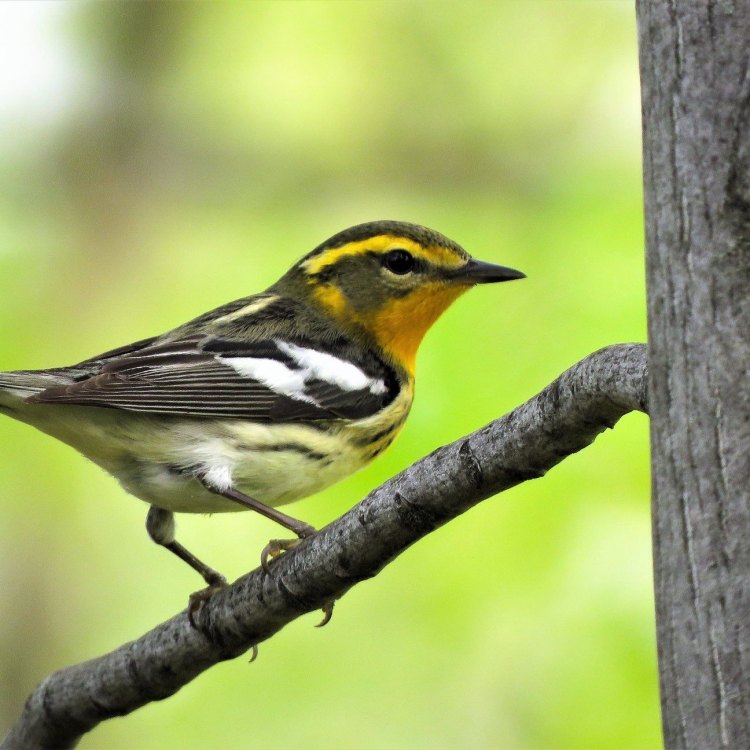
Blackburnian Warbler: A Vibrant and Fascinating Songbird
Disclaimer: The content provided is for informational purposes only. We cannot guarantee the accuracy of the information on this page 100%. All information provided here may change without prior notice.

